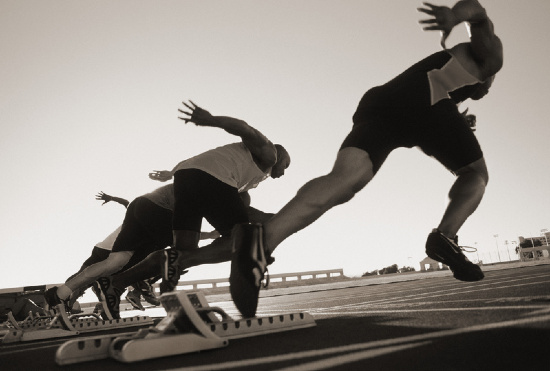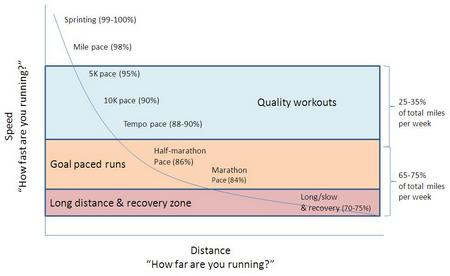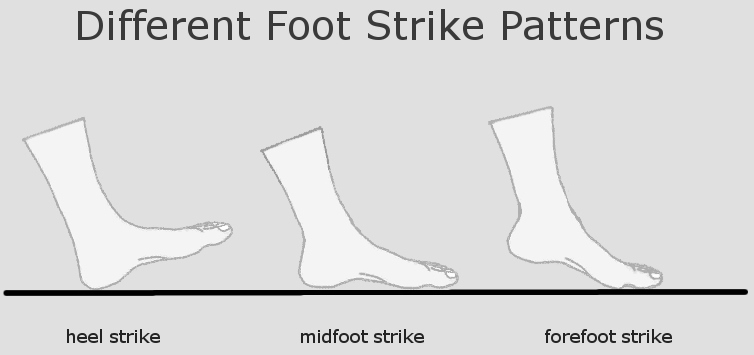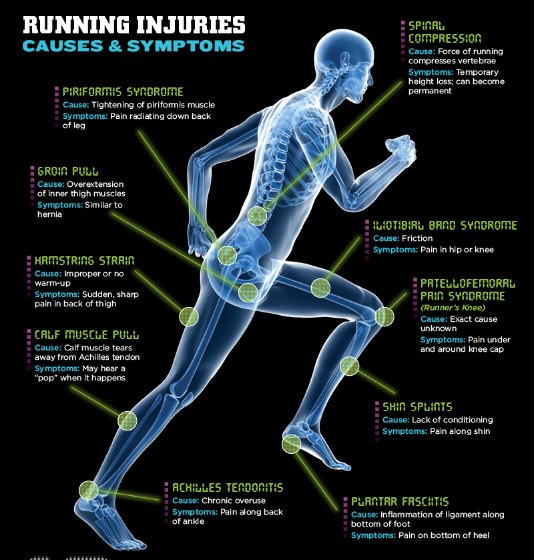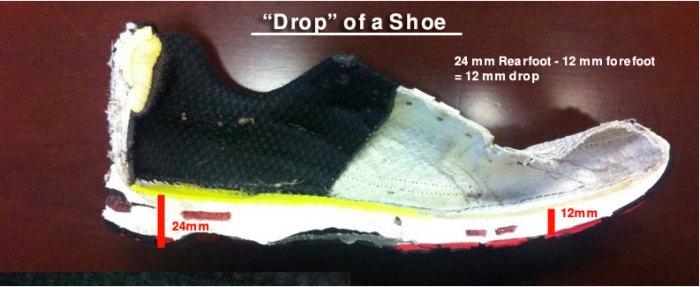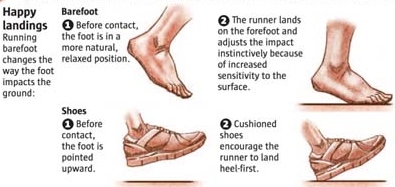Running
In the last of this three-part series on "Running," we'll examine workout programming.
Part 1 looked at shoes & footwear, and Part 2 checked out mechanics with a quick checklist for form & efficiency.
This is meant to serve as a starting point in all three facets of running; obviously it doesn't encompass everything in the running world, but provides a little insight and aims to provoke thought for beginners and experienced runners alike.
Part 3: Workout Programming
Running can be fun. If you're good at it.
We looked at this a bit in Part 1 and Part 2-- running as a skill. Improved mechanics can increase speed and endurance. Just get good, right? Then you'll be on your way to the future... over the hills and far away from the land of bad habits where you once ran. Because excelling in something challenging like a sport or physical activity has its rewards. In the case of running, it's also the gain in fitness that people shoot for.
But even as a running and endurance coach, I will be the first to admit that in the 2oth and into the 21st century we have taken this concept a bit too far. The idea that if some is good, more is better. Well the cardio craze is a thing of the past-- the 8 Track tape to today's digital age. The old school mentality of fitness that never progressed. Marathon after marathon, endurance event after endurance event creates that type of high mileage, repetitive cardio that may negatively impact joint health and/or muscle development. Especially if other aspects of fitness are neglected.
That's why CrossFit makes so much sense. At least for the unspecialized athlete. And why cross training is of the essence as an avid runner or endurance athlete.
Oxidative training got a little focus in a previous Words of the Week article entitled MetCons. Quick review: While physical activity can be addictive, specifically metabolic conditioning, it's the type of conditioning you use and the frequency at which you use it that matter. High volume training is not the same as overtraining. If you train smart by providing enough stimulus for progress, but not so much that you overtrain, any oxidative stress from your training will not damage your health but instead will help your gains on the road to fitness.
For running programming, it's important to briefly cite a few schools of thought on speed and endurance development. Then we can examine the best way to incorporate running into a fitness program specific to CrossFit or for an athlete looking for overall fitness. Training an Olympian or collegiate runner is a different story in regards to programming. But in the general fitness pursuit, we can and should still borrow from the leading research and publications for elite level runners in order to keep up in this fast-paced world.
So let's hit the starting blocks...
Leading names and companies in the world of running this century include, but are not limited to:
Competitor Running Competitor Magazine has been a go-to for runners and triathletes everywhere, and has an excellent article on the 8 Basic Types of Runs. Simple and easy to understand, they list the following as a good explanation of styles of running workouts:
- Base Run - a moderate-length run taken at a runner’s natural pace.
- Recovery Run - a shorter run performed at an easy pace.
- Long Run - a base run that lasts long enough to leave a runner moderately to severely fatigued.
- Progression Run - a run that begins at a runner’s natural pace and ends with a faster segment.
- Tempo Run - a sustained effort at lactate threshold intensity, which is the fastest pace that can be sustained for one hour in highly fit runners and the fastest pace that can be sustained for 20 minutes in less fit runners.
- Fartlek - a Swedish word meaning "speed play," where the runner mixes a base run with faster intervals of varying duration or distance.
- Hill Repeats - repeated short segments of hard uphill running used to increase aerobic power, high-intensity fatigue resistance, pain tolerance, and run-specific strength.
- Intervals - repeated shorter segments of fast running separated by slow jogging or standing recoveries.
Runner's World Boasting a wide resume of great runners as writers on their staff, Runner's World has been a front runner (pun intended) in helping beginners with training regimens for quite a while. Like Competitor Magazine, Runner's World has even published articles regarding CrossFit, as seen below.
- How good of a workout is CrossFit?
- Is CrossFit hindering my marathon training?
- How to add CrossFit into running training.
- 12 Week CrossFit Endurance Program
- Super Running: The new way to train?
Jack Daniels Not the drink, but the exercise physiologist. (The drink is for after the workout.) Publishing his book, Jack Daniels' Running Formula in 1998 and refining it in 2004, Daniels has provided the quintessential look at Cross Country and Distance Running. He provides data driven explanations and leading training advice aimed at different running abilities.
Daniels is a perfect starting point for any pure distance runner and provides workouts that advance as you do.
Others There are also a slew of 5k/10k/Marathon programs set up by successful distance runners that emulate their personal training. The bad news is their workout programming (including weekly mileage, styles of runs, and strength work) was set up for their bodies, not the public. If there's a sure fire way to get hurt quickly it's by following mileage or intensity you can't handle.
Most of the running programs out there are all aimed at the running specialist, which most readers here are not. If you stumbled upon this write-up, chances are you are interested in running as a supplement to your CrossFit workouts, or vice versa.
Therefore, the best CrossFit/Running hybrid would take on its own look.
Just like any specialist athlete, a running specialist looking to supplement their sport with CrossFit will not dive in as deep into the variance. In turn, a CrossFitter will not put in as many straight running workouts each week.
So, taking a nod from CrossFit Endurance, we can use the mentality of keeping intensity and anaerobic training in the forefront while borrowing from the expertise of leading running gurus. Anerobic training has been documented in claims to have a positive effect on aerobic capacity, but the inverse does not. However, constant aerobic training can have a place, even in a CrossFitter's repertoire, and especially for athletes looking to gain running capacity or those toying with endurance races (5k's, Half Marathons, Mini-Triathlons, etc.).
A few sample weeks from yours truly are found below. This is a very simplified look and not one-size-fits-all; it leaves out progression in fitness or the possibility of races or other competitions. It also assumes the athlete can handle 6 days of exercise, many coming from intense CrossFit WODs. If this is not the case, then the sample weeks would not apply. A newbie would take an easier approach according to ability and fitness level.
SAMPLE WEEK 1
|
MONDAY CrossFit Workout |
TUESDAY CrossFit Workout |
WEDNESDAY Easy Base Run |
THURSDAY CrossFit Workout + Tempo Run |
FRIDAY CrossFit Workout |
SATURDAY Long Run |
SUNDAY Recovery Run or Rest Day
|
SAMPLE WEEK 2
|
MONDAY CrossFit Workout |
TUESDAY Fartlek Run or Hill Workout |
WEDNESDAY Recovery Run |
THURSDAY CrossFit Workout + Short Intervals |
FRIDAY CrossFit Workout |
SATURDAY Long Run |
SUNDAY Recovery Run or Rest Day
|
Specifics of the workouts themselves have been left out for the sake of coaching preference and focus of the athlete.
Also realize the best plan must be set for you, and you alone. This is what one-on-one coaching would provide, from a trusted coach and programmer. The best training plan would be one that is individualized, or at the very least geared towards the wants and needs of the athlete.
If you have just taken the step towards minimalist footwear and better running mechanics, it would be smart to drop down the mileage (if you're currently running) so fatigue doesn't just cause you to revert to old habits. If you consider yourself prepared and an experienced runner, supplement the running work with CrossFit, or your CrossFit workouts with running, in terms of one or two double sessions a week. Yes, even if you're busy.
In general, CrossFit during the week and hit running intervals that are short and sweet with great form. If you are a distance competitor, run your long runs on Saturdays. Let the rest fall into place with the help of a coach and a steady plan for nutrition and recovery.
So away you go. Your running future awaits, with lots to consider for footwear, mechanics, and workouts.
Stay healthy and run fast, my friends.
- Scott, 8.11.2013



